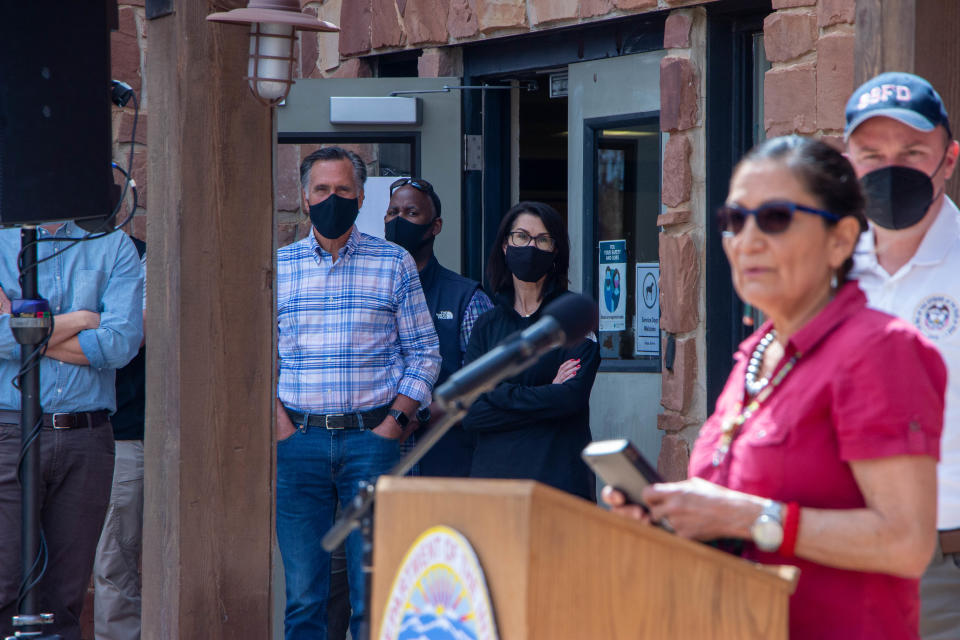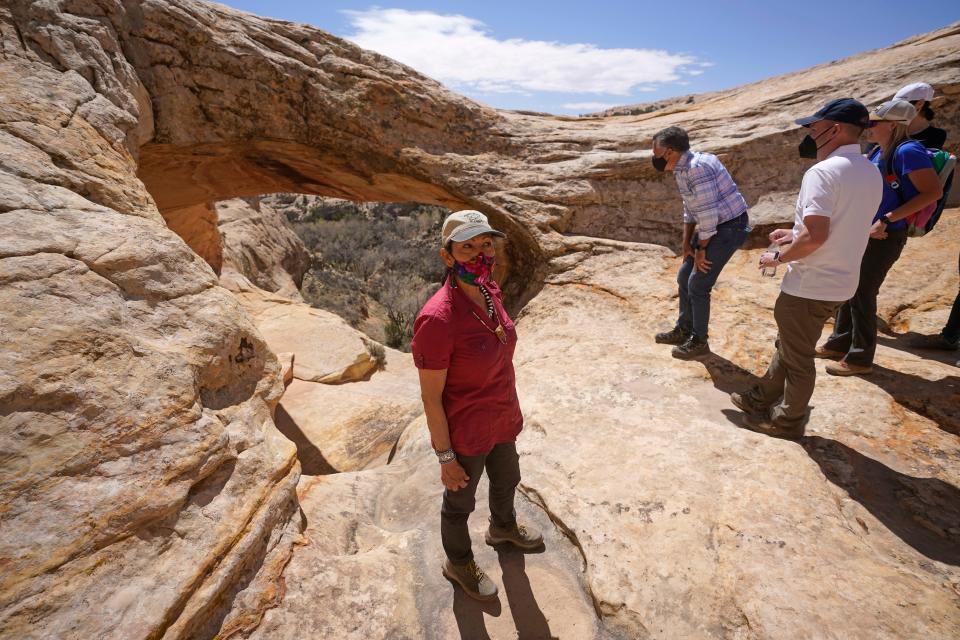Utah Republican Rep. John Curtis presses Interior Secretary over Bears Ears monument
- Oops!Something went wrong.Please try again later.
- Oops!Something went wrong.Please try again later.
U.S. Rep. John Curtis, a Republican from Utah who is among a group of state leaders that pressed former President Donald Trump to shrink the Bears Ears National Monument, questioned Interior Secretary Deb Haaland on Wednesday about what he said has been a lack of care and attention paid to the site.
In a sometimes heated meeting of the House Committee on Natural Resources, Curtis and other Republicans peppered Haaland, an appointee of President Joe Biden, about the administration’s take on energy, mining licenses, public lands access and other topics.
Curtis, whose office has long been critical of the Bears Ears monument and its management, didn’t strike the same angry tone as some of his colleagues, politely asking Haaland about what he said has been a lack of attention paid to law enforcement and other management of the monument despite its recent increase in visitors.
In 2021, President Joe Biden restored two sprawling national monuments in southern Utah — Bears Ears and Grand Staircase-Escalante — reversing a decision by President Donald Trump that opened for mining and other development hundreds of thousands of acres of rugged lands sacred to Native Americans and home to ancient cliff dwellings and petroglyphs.
Together, the monuments encompass an area nearly the size of Connecticut, and were created by Democratic administrations under a century-old law that allows presidents to protect sites considered historic, geographically or culturally important.
“This may be an oversimplification, but the argument in essence was we must do this to protect and preserve this area, we don’t trust the state, we don’t trust the county, we don’t trust the elected officials to do this as they have for many, many decades,” Curtis said.
Read more: Grand Staircase-Escalante debate flashes back to anger over Bill Clinton's designation
But in the time since Biden restored the monument to its original 1.3-million-acre size, the federal government appears to have sent "not a penny" on improving its management, Curtis said, saying local officials in the area report they haven't seen any new signage or any improvement in staffing, with the same two-person law enforcement team tasked with covering the entire area.
All the designation has done is draw more attention and attracted more visitors, Curtis said, raising the need for more help.

“Now they’re coming and we don’t have the resources to protect this,” he said.
The Bears Ears designation has been a point of debate for years between Democratic and Republican administrations.
The monument designation has affected many in south-central and southeast Utah — ranchers, tour guides, conservationists, federal public lands employees, tribal, local and county governments, and the rural families who live there. The battle over its boundaries and what it means for local resources and politics has touched on feuds hundreds of years old.

The Bears Ears area is estimated to contain more than 100,000 culteral and archaeological sites. Part of the argument ahead of its designation was that it had become a hotbed for grave robbing, looting, and other destructive activities.
Law enforcement in the area have reported an increase in such incidents in recent years, although numbers can be hard to come by in such a large area. Crimes of such nature went mostly unreported in the past, according to advocates for keeping the monument.
Read more: Interior secretary steps into Utah public lands tug-of-war
Last year, federal officials and a joint group of tribal nations reestablished a commission tasked with overseeing land management at the monument, a move celebrated as the first such joint government agreement between Native Americans and U.S. officials.
This article originally appeared on St. George Spectrum & Daily News: Utah congressman presses Haaland over Bears Ears monument

